
This page gives an overview of the complex structure of environmental and cultural conservation in the United Kingdom.

Some statutory nature reserves are designated by national bodies in the United Kingdom, and are known as national nature reserves.

The Wildlife and Countryside Act 1981 is an Act of Parliament in the United Kingdom implemented to comply with European Council Directive 79/409/EEC on the conservation of wild birds. In short, the act gives protection to native species, controls the release of non-native species, enhances the protection of Sites of Special Scientific Interest and builds upon the rights of way rules in the National Parks and Access to the Countryside Act 1949. The Act is split into 4 parts covering 74 sections; it also includes 17 schedules.

Crithmum is a monospecific genus of flowering plant in the carrot family Apiaceae, with the sole species Crithmum maritimum, known as rock samphire, sea fennel or samphire. The name "samphire" is also used for several other unrelated succulent halophyte species of coastal plant.

The Countryside and Rights of Way Act 2000, known informally as the CRoW Act or "Right to Roam" Act is a United Kingdom Act of Parliament affecting England and Wales which came into force on 30 November 2000.

Wildlife management is the management process influencing interactions among and between wildlife, its habitats and people to achieve predefined impacts. It attempts to balance the needs of wildlife with the needs of people using the best available science. Wildlife management can include wildlife conservation, gamekeeping and pest control. Wildlife management draws on disciplines such as mathematics, chemistry, biology, ecology, climatology and geography to gain the best results.

Gallows Hill SSSI is a Site of Special Scientific Interest on the north side of the Ebble Valley in south Wiltshire, England. Its chalk grassland and scrub contain a number of animal and plant species that are nationally rare. The 27.8 hectares site was notified in 1965.

Quickella is a monotypic genus of land snail in the family Succineidae, the amber snails. It is known commonly as the sandbowl snail. The only species is Quickella arenaria.
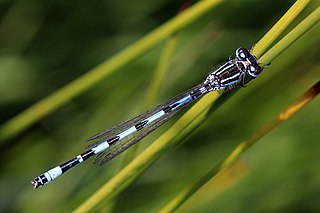
Coenagrion mercuriale, the southern damselfly, is a species of damselfly in the family Coenagrionidae. It is found in Algeria, Austria, Belgium, France, Germany, Italy, Liechtenstein, Luxembourg, Morocco, the Netherlands, Portugal, Romania, Slovakia, Slovenia, Spain, Switzerland, Tunisia, and the United Kingdom. Its natural habitats are rivers and freshwater springs. It is threatened by habitat loss.
Victorella pavida or trembling sea mat is a species of bryozoan found in shallow waters of low or fluctuating salinity, such as lagoons and estuaries. In summer it can have the appearance of velvet. The zooids may be from 0.3 mm to 1 mm in length. They live in colonies underwater attaching to stones. They feed using tiny hairs attached to their crown of tentacles to catch tiny particles flowing through the water, also known as "filter feeding".

Dropshort Marsh is a 2.7-hectare (6.7-acre) biological Site of Special Scientific Interest in Toddington in Bedfordshire. It was notified under Section 28 of the Wildlife and Countryside Act 1981 in 1985, and the local planning authority is Central Bedfordshire Council. The site is managed by the Wildlife Trust for Bedfordshire, Cambridgeshire and Northamptonshire.
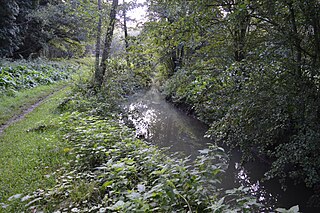
Flitwick Moor is a 59.8-hectare (148-acre) biological Site of Special Scientific Interest between Flitwick and Greenfield in Bedfordshire. It was notified under Section 28 of the Wildlife and Countryside Act 1981 in 1984 and the local planning authority is Central Bedfordshire Council. The site is managed by the Wildlife Trust for Bedfordshire, Cambridgeshire and Northamptonshire.

The Viper's Bugloss(Hadena irregularis) is a species of moth of the family Noctuidae. It is found in Europe.
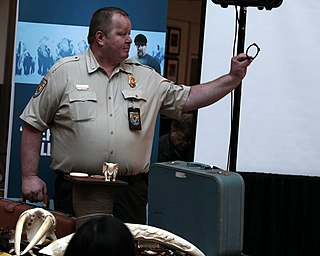
A wildlife inspector is a person empowered by law to protect wildlife.
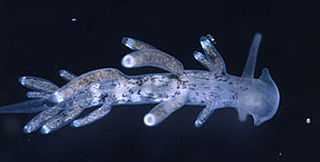
Tenellia adspersa, common name the miniature aeolis, is a species of very small sea slug, an aeolid nudibranch, a marine gastropod mollusk in the family Fionidae. It is the type species of the genus Tenellia.

Kings and Bakers Woods and Heaths is a 212.8-hectare (526-acre) Site of Special Scientific Interest (SSSI) between Heath and Reach in Bedfordshire and Great Brickhill in Buckinghamshire. The site is mainly in Bedfordshire but includes Rammamere Heath in Buckinghamshire. It was notified in 1984 under Section 28 of the Wildlife and Countryside Act 1981, and the local planning authorities are Central Bedfordshire Council and Aylesbury Vale Council. Part of it is a National Nature Reserve, and part of it is a nature reserve managed by the Wildlife Trust for Bedfordshire, Cambridgeshire and Northamptonshire. it is also a Nature Conservation Review site.
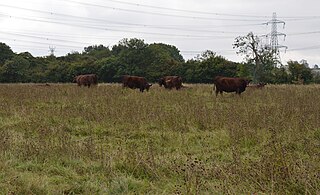
Fancott Woods and Meadows is a 13.3-hectare Site of Special Scientific Interest near the hamlet of Fancott in Bedfordshire. It was notified under Section 28 of the Wildlife and Countryside Act 1981, and the local planning authority is Central Bedfordshire Council. The site is managed by the Wildlife Trust for Bedfordshire, Cambridgeshire and Northamptonshire.
Wildlife law in England and Wales is the law relating to the protection of wildlife in England and Wales. Much of existing UK law dates from pre-Victorian times. Wildlife was viewed as a resource to be used; phrases such as "game" or "sporting rights" appear. Public opinion is now much more in favour of protection of birds and mammals rather than the landowners’ interests.

The Wildlife and Natural Environment (Scotland) Act 2011 or WANE Act is an Act of the Scottish Parliament which introduced legislation to that country, affecting the way land and the environment is managed. The Act also amended earlier environmental legislation, including the Wildlife and Countryside Act 1981 and the Deer (Scotland) Act 1996.

Hockering Wood is an 89.5-hectare (221-acre) biological Site of Special Scientific Interest east of Dereham in Norfolk.


















